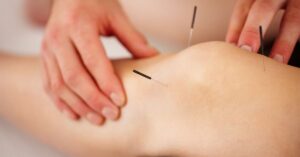Are you seeking effective ways to manage chronic pain? Explore biofeedback therapy as a potential solution for pain relief. This article delves into the techniques, benefits, and applications of biofeedback in rehabilitation and chronic pain management.
What is Biofeedback?
Biofeedback is a mind-body technique that teaches individuals to gain awareness of various physiological functions. Through biofeedback training, people can learn to control these functions, which can be beneficial for pain management and overall health. This process often involves the use of biofeedback equipment to monitor and provide real-time feedback on these bodily processes, allowing individuals to make conscious adjustments.
The Science Behind Biofeedback Therapy
Biofeedback therapy enhances self-regulation by providing immediate feedback on physiological responses. This awareness enables individuals to consciously influence and modulate these responses, potentially leading to a decrease in pain and improved well-being. This form of biofeedback intervention can be a valuable tool in physical therapy.
Biofeedback vs. Traditional Pain Management
Traditional pain management often relies on medication and invasive procedures, whereas biofeedback offers a non-pharmacological approach. Biofeedback therapy empowers individuals to take an active role in their pain relief by learning self-regulation techniques. While traditional methods may provide temporary relief, biofeedback aims to address the underlying causes of chronic pain by promoting long-term changes in physiological responses. [Insert Internal Link]
Types of Biofeedback Techniques
Electromyography (EMG) Biofeedback
Electromyography biofeedback (EMG) measures muscle tension and activity. This allows individuals to become aware of muscle tension patterns and learn to relax those muscles, which can be particularly helpful for conditions like chronic low back pain and tension headaches. Electromyographic biofeedback is often used in rehabilitation settings to improve muscle function and reduce pain.
Thermal Biofeedback
Thermal biofeedback focuses on skin temperature to help individuals learn to increase blood flow and warm their extremities. This is achieved through relaxation and visualization techniques, making it a useful tool for managing conditions like Raynaud’s phenomenon and migraine headaches. Thermal biofeedback can also be an effective component of a comprehensive treatment plan for various pain conditions.
Heart Rate Variability Biofeedback
Heart Rate Variability Biofeedback (HRVB) focuses on increasing the balance between the sympathetic and parasympathetic nervous systems. By learning to control their heart rate patterns, individuals can enhance their body’s natural ability to regulate stress and reduce pain. This technique can be particularly effective for managing chronic pain syndrome and improving overall well-being. Heart Rate Variability Biofeedback may have a positive effect on biofeedback for chronic pain.
Biofeedback Therapy for Chronic Pain Relief
How Biofeedback Helps Manage Chronic Pain
Biofeedback therapy offers a non-invasive approach to pain management by teaching individuals to control their physiological responses. Through biofeedback training, patients learn to regulate functions like heart rate and muscle tension, effectively managing chronic pain. A systematic review shows that biofeedback intervention can decrease pain in various conditions. [Insert Internal Link]
Case Studies and Success Stories
Case studies highlight the positive effect of biofeedback on chronic pain, particularly for conditions like chronic low back pain. Success stories often emphasize the role of biofeedback training in empowering individuals to take control of their pain levels. These examples illustrate how biofeedback intervention can be a valuable component in the treatment of chronic pain and enhancing overall well-being.
Combining Biofeedback with Other Therapies
Integrating biofeedback with other therapies, like CBT and physical therapy, can enhance pain management outcomes. A comprehensive treatment plan often includes a combination of approaches to maximize pain relief and improve the patient’s overall quality of life.
Implementing Biofeedback Interventions
Finding a Qualified Biofeedback Practitioner
Finding a qualified biofeedback practitioner, ideally certified by the BCIA, is crucial for effective treatment of chronic pain. A skilled practitioner will tailor biofeedback training to your specific pain condition and needs. It is important to find someone who can help manage chronic pain.
Home-Based Biofeedback Devices
Home-based biofeedback devices can be useful for continuing biofeedback training outside of clinical settings, but they should be used under the guidance of a qualified practitioner. They are helpful in pain relief and for improving pain.
Steps to Start a Biofeedback Program
Starting a biofeedback program involves consulting with a healthcare provider, finding a qualified practitioner, attending regular sessions, and practicing techniques at home. This reinforces self-regulation skills and maximizes the benefits of biofeedback in rehabilitation.
Current Research and Systematic Reviews
Latest Findings in Biofeedback Research
Recent studies continue to highlight the efficacy of biofeedback therapy in pain management. Research indicates that biofeedback techniques can significantly decrease pain levels in individuals suffering from chronic pain syndrome. These findings support the use of biofeedback intervention as a valuable component in a comprehensive treatment plan.
Systematic Review of Biofeedback Interventions
A systematic review of biofeedback interventions underscores its potential in alleviating chronic pain by enhancing self-regulation and reducing pain. Electromyographic biofeedback has been particularly effective in managing muscle tension and pain associated with chronic low back pain.
Future Directions for Biofeedback Therapy
The future of biofeedback therapy holds promising advancements for pain management. Emerging research is exploring the use of virtual reality and wearable technology to enhance patient engagement and personalize biofeedback training programs.
Practical Tips for Pain Management
Integrating Biofeedback into Daily Life
Integrating biofeedback training into daily life can significantly enhance pain relief and overall well-being. Regularly practice relaxation techniques and use home-based devices to reinforce self-regulation skills.
Setting Realistic Goals with Biofeedback
Setting realistic, achievable goals is crucial for the success of a biofeedback program. Regularly assess progress and adjust goals as needed to remain attainable and motivating.
Monitoring Progress and Outcomes
Monitoring progress and outcomes is essential to determine the efficacy of biofeedback in pain management. Keep a pain journal and regularly assess physiological responses using biofeedback equipment.
Conclusion and FAQs
Recap of Key Points on Biofeedback for Chronic Pain
In summary, biofeedback therapy offers a non-pharmacological approach to manage chronic pain by teaching individuals to control their physiological responses. Integrating biofeedback training into daily life and setting realistic goals are crucial for success.
Final Thoughts on Biofeedback Therapy
Biofeedback therapy empowers individuals to take an active role in their pain management, offering a valuable alternative to traditional methods. By learning self-regulation techniques, patients can experience sustained pain relief and improved quality of life.
Frequently Asked Questions
Q1: How long does it take to see results with biofeedback therapy?
A1: The time it takes to see results with biofeedback therapy varies depending on the individual and the pain condition. Here’s a general idea:
| Timeline | Expected Outcome |
|---|---|
| Few sessions | Noticeable improvements for some |
| Several weeks of consistent training | Improvements for others |
Q2: Is biofeedback therapy covered by insurance?
A2: Many insurance companies cover biofeedback therapy, particularly when prescribed by a healthcare provider for a specific medical condition. To understand your specific coverage, consider the following:
| Factor | Details |
|---|---|
| Prescription Requirement | Coverage is often better when prescribed by a healthcare provider. |
| Pre-authorization | You may need pre-authorization, especially for treating adults with neck pain. |
It’s essential to check with your insurance provider to determine the extent of coverage and any specific requirements.
Q3: Can biofeedback therapy be used for pelvic pain?
A3: Yes, biofeedback therapy can be an effective treatment option for pelvic pain. The following table outlines some biofeedback techniques used for pelvic pain:
| Technique | Benefit |
|---|---|
| Pressure Biofeedback | Helps individuals learn to relax pelvic floor muscles. |
| EMG Biofeedback | Helps individuals learn to relax pelvic floor muscles and reduce pain and discomfort associated with pelvic pain syndrome. |
Q4: Are there any side effects associated with biofeedback therapy? A4: Biofeedback therapy is generally considered safe and has few side effects. Some individuals may experience mild muscle soreness or fatigue after sessions, but these symptoms are typically temporary. Biofeedback aims for pain relief and in rehabilitation.
Q5: Can I use home-based biofeedback devices without professional guidance? A5: While home-based biofeedback devices can be helpful for reinforcing self-regulation skills, it’s essential to use them under the guidance of a qualified biofeedback practitioner. Professional guidance ensures that the devices are used correctly and that the biofeedback training is tailored to individual needs and pain conditions, improving its effect.





